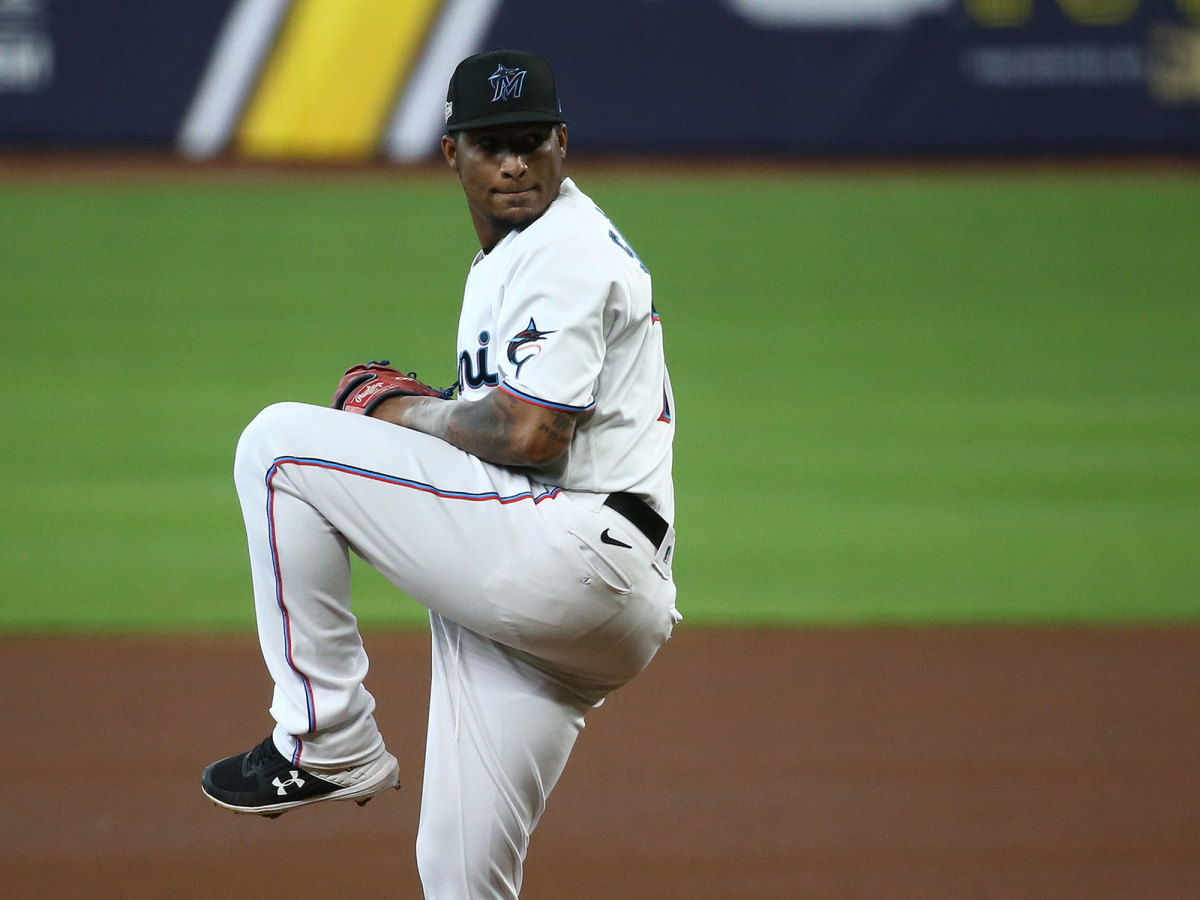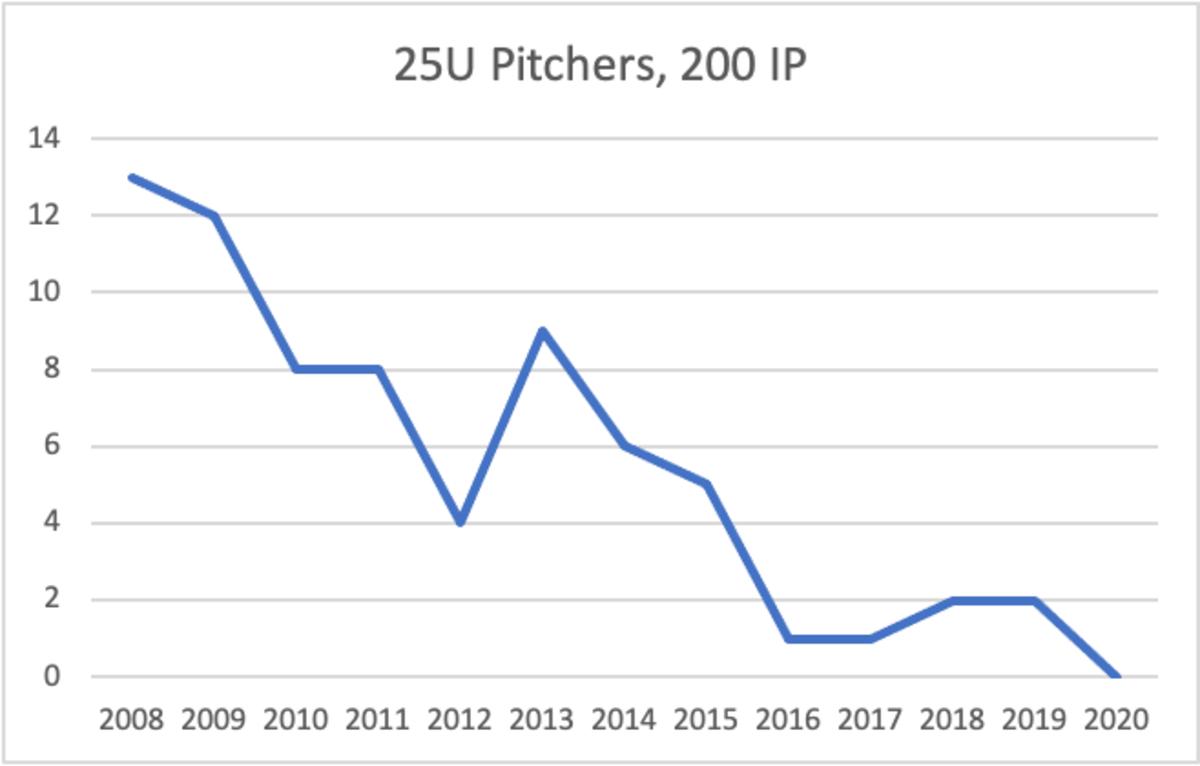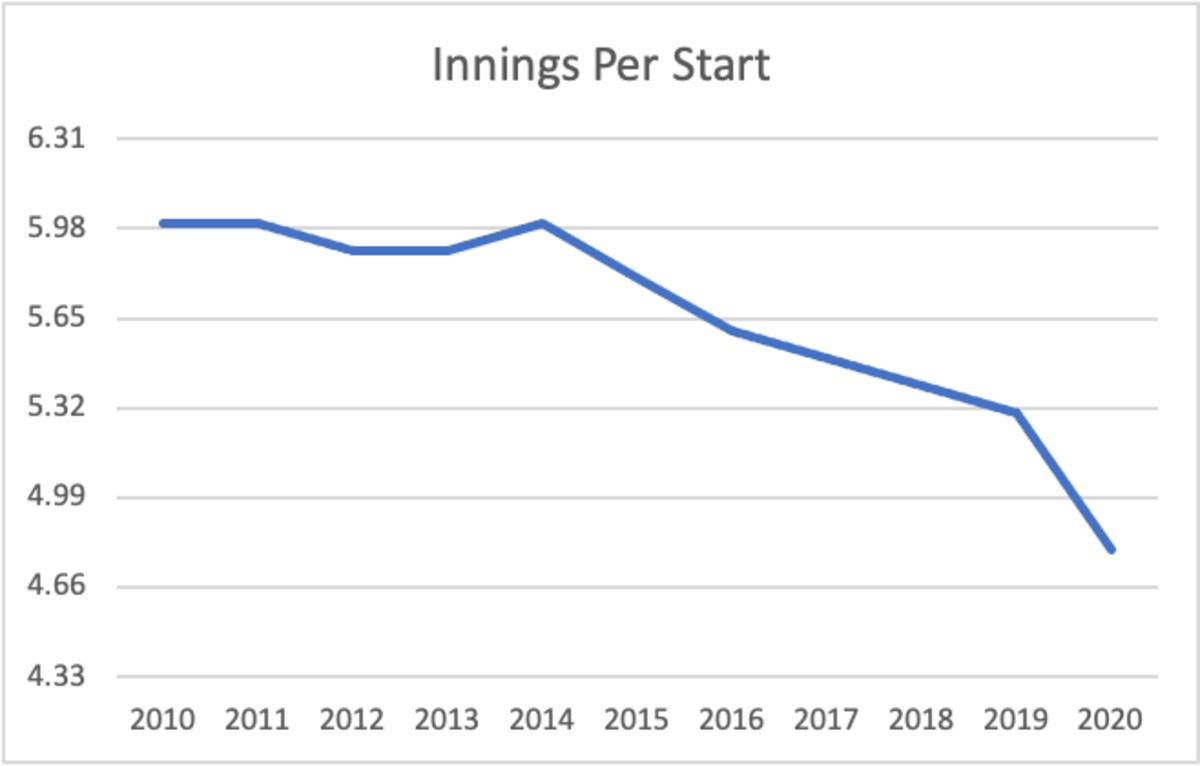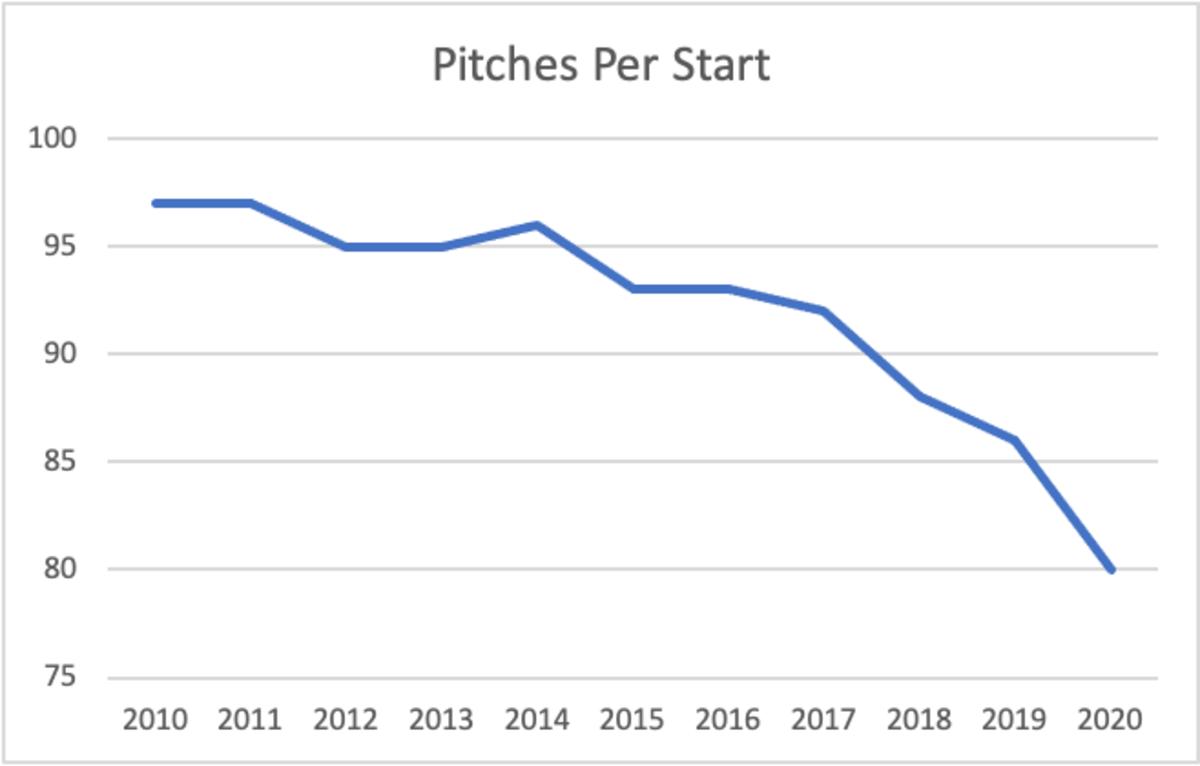Ready for a 162-Game Season? MLB's Young Pitchers Are Not
A whiff of danger follows the development of starting pitchers. Position players such as Juan Soto and Fernando Tatis Jr. can be thrown into everyday roles at age 21 without fear of physical harm. Such are the unique demands of throwing a baseball competitively that young pitchers are developed slowly.
This year the danger in the air around them is particularly acute. All 30 teams face a great unknown: How do you transition pitchers from the shortest season in history to a full season? As an example, using Sixto Sánchez of Miami, how can you ask a 22-year-old pitcher who throws 98.5 mph and who threw only 47 innings last year to throw 180 innings this year? You don’t.
All pitchers are looking at a huge challenge in 2021. When owners and MLB bickered about when to start the 2020 season, agent Scott Boras supported playing more than 60 games in part because he feared the toll of pitching a full season after a short one, even for the likes of Gerrit Cole and Max Scherzer. As protection, this season is likely to bake in more six-man rotations, even more pitching changes, even shorter starts and possibly expanded rosters—all of which continued to drag pace of play. The physical risk is most acute for young pitchers who have not packed on enough innings.
“We have talked about their [throwing] programs and what it looks like given that last year was shortened,” says first-year Marlins general manager Kim Ng. “We just need to be really careful with them, and not just from a strict innings standpoint. We need to pay attention to the stress they are under and in a certain way we can measure and value that with proper diligence.
“A lot of it takes place during the season—making sure we are monitoring them, and especially the stressful innings they pitch, and making sure we don’t push them any further than they can handle.”
No team faces a bigger challenge this year with young starters’ workloads than the Marlins. No team relied on them more last year. Fifty-three of Miami’s 60 games were started by pitchers 27 and younger. The Rockies were next with 48 games. Miami’s chances to return to the postseason this year will depend largely on how it monitors these young starters:
• Sánchez, 22: He threw 47 innings last season (postseason included), has averaged just 69 innings over the past three seasons and has a pro high of 114. It would be foolish to think the Marlins will start him 30 times and run up 160 innings on his arm.
Asked what stands out about Sanchez, Ng says, “It’s hard to get past the power arm. It doesn’t seem like he has a lot of scare out there. That’s really important when you're building a championship-caliber club. He showed that late in the year and through the playoffs.”
• Trevor Rogers, 23: After throwing 136 1/3 innings in 2019, he logged only 29 2/3 in the short season. He’s built like Madison Bumgarner and from his 6-foot-5 frame confounds hitters with a low release point of almost the same height (5' 7'') as Bumgarner and Jon Lester.
“I like his arm angle,” Ng said. “I really like it. He is just so—what is the word I’m looking for—he has such a presence on the mound for me.”
• Edward Cabrera, 22: This is the kind of intriguing case all clubs face with pitchers who have yet to reach the big leagues. Cabrera just might be the best of the bunch in Miami, but he did not throw a competitive pitch in 2020 because the pandemic wiped out the minor league season. His pro innings high is just 100 1/3 three seasons ago. This has “handle with care” written all over it.
“The stuff is off the charts,” Ng said. “Some people think that he is ‘the guy’ within our rotation. In terms of not having a season in, we did the best we could with all of our pitchers in terms of getting them work and keeping an eye on them.”
Within the last decade all teams have moved to a “staircase” model of adding innings to young pitchers’ workloads. Gone are the days when the 2002 Royals would add 92 innings to the workload of Runelvys Hernandez, or the 2010 Marlins would give a 66-inning increase to 22-year-old Alex Sanabia. It used to be easy for me to find handfuls of guys who ran up big increases. Now every team starts with an ideal range of innings for each young pitcher each season.
“Thirty teams are doing this,” says Tigers manager A.J. Hinch, the former Houston manager. “With the Astros we tried to stay somewhere in the 20% to 30% range [of maximum added innings per year], though it’s always a little different if a guy did it before but was coming off an injury.
“I don’t think you can have one philosophy nowadays. It’s so individualized to what each arm and body can handle. This year will be a challenge. What’s different this year is 30 teams are going to go through it.”

Monitoring workloads has become much more sophisticated than just counting innings.
“I think as the ways we measure stress get more sophisticated those items are easier to track,” Ng said. “It’s not just going on, asking your pitchers, ‘How are you feeling?’ Guys will always tell you they’re fine. We’ve made strides technology-wise in monitoring these things.”
Throughout a season, teams conduct regular arm and shoulder health checkups, comparing strength and flexibility test results to a pitcher’s baseline numbers. They also use three-dimensional motion capture technology to flag warning signs.
“It can be done during the game,” Ng said, “in terms of arm angle, release point, velocity … all of it can be compared to baselines.”
Like Miami, Detroit relies on young starters and will have to protect their workloads. Casey Mize, 23, threw 28 1/3 innings last year and never has thrown more than 128 1/3 (including college innings). Tarik Skubal, 24, threw 32 innings last year and has topped out at 122 2/3.
“We’ve started gathering ideas at least internally with the pitching department and front office,” Hinch said. “We have a little bit of everything. We have guys who have pitched a tremendous amount of innings like [Matthew] Boyd and [Spencer] Turnbull, we have young pitchers who haven’t had that traditional ascent in innings in Mize and Skubal, and we have [Michael] Fulmer coming off a major injury. We’re bouncing ideas off each other.”
Limits on young pitchers began taking root after both Mark Prior and Kerry Wood broke down after they combined to throw 803 2/3 innings for the 2002-03 Cubs. Though each had serious mechanical flaws, their workload drew the most attention. (In those two seasons alone, Prior and Wood threw 120 pitches in a game 28 times–more than every pitcher in baseball over the past three years combined.) By 2012, the Washington Nationals so strongly believed in innings limits they shut down Stephen Strasburg in a postseason race and postseason.
Big jumps in workloads rarely happen now. It’s not just because of the “staircase” method of building innings. It’s also because analytics and the success in training pitchers to throw hard have led to a bullpen-heavy game that splits the outs of a game among more and more pitchers.
You don’t have to compare Sánchez, Rogers, Mize and Skubal to Seaver, Sutton, Carlton and Jenkins to understand how the game has changed. Young pitchers today will not be worked the way Madison Bumgarner, Clayton Kershaw, Zack Greinke, Félix Hernández and Rick Porcello were a decade ago.
From 2009 to 2019, the number of 25 and younger pitchers who threw 200 innings dropped 83%. More pitchers 25 and younger threw 200 innings in 2013 (nine) than in the past four full seasons combined (just six from 2016-19).
Take a look at the rapid decline in workhorse young starters:

It’s not just the young arms that are getting their work reduced. Look at the accelerated decline since 2015 in the average innings per start for all starters:

The same post-2015 decline shows up in the average number of pitches per start. From 2015 to 2019 (the last full season), starters’ average workload dropped from 93 pitches to 86 pitches:

Every team is reading from the same sheet of music. Divide and conquer. The Dodgers won the World Series while making more pitching changes than any team. The previous decade began with 131 120-pitch games. It ended with only 14.
The result has been a more efficient game but a slower, less entertaining one. The removal of a dominant Blake Snell in the deciding game of the World Series–due only to an analytics law that a fresh reliever is better than a starter facing hitters a third time–brought this trend into the harshest of lights.
Fewer starters become drawing cards as their innings are curtailed. The parade of relievers grows longer, inserting more stops in a game already overwrought with them. The average number of relievers used per game has increased seven straight years. Since 2014 it has jumped from 5.96 changes per game to 6.86.
There is no blueprint for playing a full season after a 60-game season with no minor league innings. All pitchers are in harm’s way more than usual this year. Given the deepening trend since 2015 to turn over more of a baseball game to bullpens, you should expect clubs to be even more cautious this year with their young pitchers.
